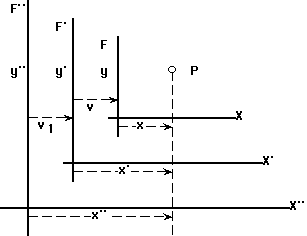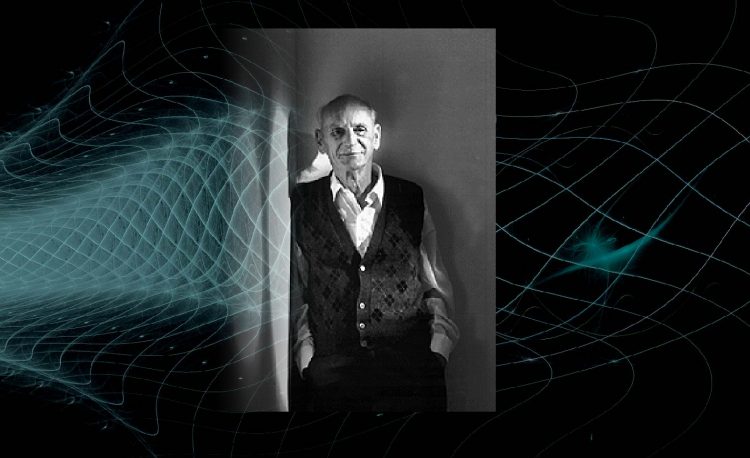The struggle of brilliant critical minds challenging Big Physics and Big Cosmology is not a recent phenomena. In fact, it has existed throughout human history and when there are established ideas, there are bound to be people finding problems with the ideas and coming up with new ones.
Just at the time when Albert Einstein was becoming an American citizen, a young physics student in Argentina got into an argument with his physics professor that would lead him to finding flaws in relativity theory. At about the same age as Albert was when he came up with his infamous theory of special relativity (around 26 years old), this young 20-something upstart spent four intense years pouring over Albert’s work until he finally had not only an explanation for what was wrong with Einstein’s special theory of relativity, but came up with a better set of equations that were simply and did not have the problems Einstein had introduced with his theory. His name was Ricardo Carezani.
Kinetic Energy Applied Incorrectly
The first thing young Carezani spotted that lead him to finding fatals flaws in relativity was the misapplication of kinetic energy equations to a non-kinetic energy problem. Ricardo’s professor showed the class how physicists applied Einstein’s relativistic kinetic energy equations to radioactivity. That immediately made no sense to Carezani who argued day after day with his professor that applying kinetic energy equations to decay or radioactivity made no sense.
Kinetic energy comes from a moving object outside a system. For instance, a billiard ball is moving toward stationary billiard balls and imparts kinetic energy that pushes the other billiard ball.
But when it comes to radioactivity or what physicists call “decay”, there is no external energy source knocking out the electrons or radioactivity from a substance. The “energy” radiating from the object comes from within the object itself, not from anything external. Carezani was right, but his professor was the professor and physicists said “this is what is done” and no one should question it.
Luckily for us, Carezani persisted and after 4 years of calculations, came up with his “autodyanmic” equations – a marked improvement on relativity.
Multiple Frames are Not Needed
What Carezani found was that in the derivation of Einstein’s special theory of relativity, Einstein used more than one mathematical coordinate system. Carezani found that the second or sometimes third frames used in relativity calculations where mathematically and physically superfluous, redundant – they were not needed.

To put it simply, there is no need ever in the universe to measure any object other than directly instead of using an additional frame. For instance, if there is a flashlight on a train held by Einstein and you are on the ground with the train passing by, you need only concentrate on the moving flashlight and the light coming from that flashlight and measure everything from your reference point, not the reference point of the train.
In even simpler terms, there is only one three dimensional infinite space in the universe and all we can do when measuring is to choose one point for an origin, and do all our measuring from that point. There is no need to measure through another system of coordinate frames.
When Carezani eliminated the redudent coordinate system or “frames” as they are called in physics, a new set of equations appeared. The question was: what were they new equations and what did they mean?
Einstein Transformed into Newton
The new set of equations that emerged, the young Carezani called “autodynamic”. Whereas relativity was based on moving objects that never included energy that got the objects moving in the first place, the “autodynamic” equations said that for an object to move on it’s own, it had to expend it’s own “energy” or mass in the process. Where Einstein’s equations already contained a velocity of unknown origin, Ricardo Carezani said that relativity equations should be looked at like a rocket ship.
Rocketships move on their own accord. When a rocket ship or probe or satellite moves in space, it expels some of its mass to move itself. The autodynamic equations are mathematical descriptions of this process. Without the magically appearing or existing velocity, the Carezani succeeded in transforming Einstiein’s relativity equations into a Newtonian form – something much simpler.
Instead of the magic of Einstein’s special relativity equations predicting that mass increases as it approaches the speed light, Carezani’s equations say that velocity is not for free and that mass, like rocket fuel, had to be expelled in order for the object to move.
No more mass increasing, length contracting, or time slowing down without justification.
Not Blowing Up at Zero
Another important aspect of Carezani’s equations is that they did not blow up when the speed of an object reached the speed of light. This was a problem for both Einstein’s special and general relativity.
Einstein’s kinetic energy equation blows up when the velocity of an object reaches the speed of light:
![Rendered by QuickLaTeX.com \[KE_{sr} = m_0 c^2 \bigg( \frac{1}{\sqrt{1 - \frac{v^2}{c^2}}} - 1\bigg)\]](https://beyondmainstream.org/wp-content/ql-cache/quicklatex.com-5b7d3c9d1c34198b875e2c55e13e840d_l3.png)
Carezani’s kinetic energy equation goes to zero when the speed is equal to the speed of light:
![]()
Explaining the Subatomic World Without Relativity
Carezani when onto start applying his new equations to the particle world including particle accelerators.
He applied the autodynamics equations to nucleus / nucleus collision in atom smashers and was able to show conservation of energy without the use of the Neutrino, a particle Carezani had showed during his four years of calculations in his university to be an particle that invented to save special relativity. Carezani also applied his equations to Muon Decay, Pion Decay, the Compton Effect, and more.
Carezani much later in life applied his equations to the derivation of Bohr’s atom without the need for wave equations.
Ricardo Carezani even succeeded in performing an experiment at the Stanford Linear Accelerator called the “Calorimetric Experiment” where he hoped to show his autodynamic equations correct over Einstein’s. Unfortunately, Carezani found out after the first experiment that the test was flawed and proposed a new experiment called the “New RadiumE Experiment” (Radium E being Bismuth). But by that time, Big Physics had enough of trying to show Einstein wrong and did not perform Carezani’s second experiment.
Repression and Ignoring
Except for a few champions of this work (David de Hilster – myself – being one of them), Carezani’s work has been both repressed and ignored by mainstream science and a great majority of dissident scientists. The reasons vary.
Big Physics certainly does not want to prove one of it’s biggest assets to be wrong: namely Albert Einstein. Albert is a legend and his image and work have been pumped up beyond realistic for so long, that there is no interest in proving him wrong.
As for dissidents, most believe special relativity to be wrong but few take the time to read, study, and either agree of disagree with Carezani’s work. Many dissident believe the neutrino to be real and use it in their models despite Carezani clearly showing the neutrino was invented to save the conservation of energy when dealing with Einstein’s “magical” special relativity.
Ignore Carezani at Your Own Peril
Regardless of the reasons, for those who do study Carezani’s work, it becomes quite clear that he work showing Einstein’s special theory of relativity is not only valid, but Carezani’s resulting autodynamic equations afford a great simplification to the subatomic world, throwing out the bad-boy neutrino in the process.
And if you are a science dissident with your own model and you choose to model the neutrino, which, according to Carezani’s followers and some others, does not exist, then you do so at your own peril. You are doomed to repeat the mistakes of the past and risk having your own work and theories stagnate while those around you move forward and thus furthering science progress.
Read More about Carezani’s Work
You can read more about Dr. Ricardo Carezani’s work and life at http://www.autodynamics.org
- Carezani Books on Amazon
- Dr. Ricardo Carezani’s work and life: http://www.autodynamics.org
- His wikipedia page: https://en.wikipedia.org/wiki/Ricardo_Carezani
- Our wiki page:
http://wiki.naturalphilosophy.org/index.php?title=Ricardo_L_Carezani - Autodynamics on Wikipedia: https://en.wikipedia.org/wiki/Autodynamics
![]()




